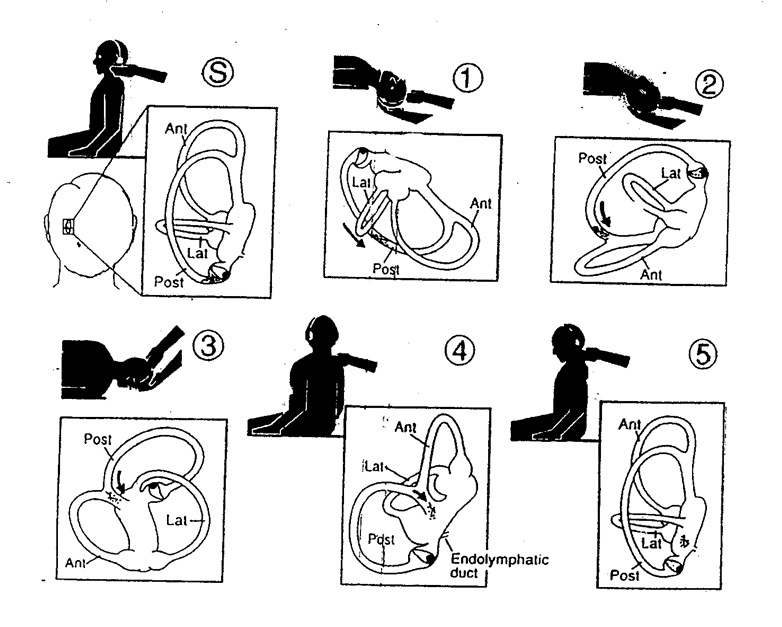This condition, which causes the patient and often his doctor, a good deal of concern is due to free floating particles (Calcium Carbonate crystals) in the balance organ of the inner ear. The condition can follow head injury.
Typically, symptoms begin when the patient, lying in bed, rolls onto his side. Vertigo follows and lasts a very brief period, usually only seconds. It is rotatory
in type (the room seemsto spin). There is often little in the way of nausea and there are never any ear symptoms i.e. hearing loss or ringing ears.
The condition is self limiting and generally improves steadily in less than 1-2 months.
If hearing and clinical examination of the brain and cranial nerves is normal, no investigations (e.g. MRI or CT scan) are required. – .
The ear at fault can be determined by placing the patient on his back with one ear in the downward position. The patient is giddy when the damaged ear is below and not giddy when lying the other way.
Treatment is rarely necessary. Medication is of little help. Occasionally, exercises which correct inner ear function are required in persistent cases. Even more rarely if symptoms persist for a very long period surgery is offered.
Caution is required with driving, working on a ladder or a roof etc. The doctor in conjunction with the patient needs to decide whether these
·activities are safe.
BPPV is a common peripheral vestibular disorder. It is characterized by a brief sensation of vertigo (spinning) which occurs when the person’s head is moved into provoking positions. Rolling over in bed, bending forward and looking up are frequently described activities which if performed quickly will aggravate vertigo, with occasional nausea and vomiting. BPPV may come in bouts, lasting several days and then resolving, only to return again months later. BPPV does not respond to medication, though the drugs often prescribed will help with the’ nausea.
The characteristics of BPPV have been explained by two different theories. The first theory proposes that calcium carbonate crystals break free from an area inside the inner ear and adhere to the cupula of the posterior semi-circular canal within the inner ear. This causes the cupula to respond abnormally to the pull of gravity and when the patient moves his head in certain directions an incorrect signal is sent to the brain. The patient feels temporary spinning. This is ‘called the cupulolithiasis theory. The second and more accepted theory, suggests thatthe calcium carbonate crystals are free floating in the posterior semi-circular canal rather than adhered to it. This would create an inaccurate message to the brain when the patient moves in particular directions. If the particles are free floating they will respond to deliberate repositioning movements which can resolve the symptoms.
Fortunately, BPPV usually responds to treatment and is self limiting. Stemetil and sere do not provide relief. In the majority of cases, the crystals canbe repositioned out of the posterior semi-circular canal to another part of the labyrinth which does not create inaccurate information to the brain. In a few cases if this treatment is not effective, then new surgical techniques may be considered to stop the vertigo.
The treatment is not difficult and can be repeated. However instructions should be followed carefully. It may initially be performed by a medical professional.
Subsequently continue to be cautious and try not to perform the activities that cause the vertigo. When reclined, keep the problem ear on top, i.e. lie on the opposite side. Use several pillows, do not lie flat. Move slowly and not into positions which usually cause the vertigo. This is only necessary for a day. This allows gravity to pull the particles away from the problem area. After a day you may wish to try and see if the symptoms are resolved. Try to lie on the side which you have been avoiding. There should be no vertigo. If there is, then repeat the particle repositioning manoeuvres from the beginning.
Please call if you have any problems or questions and return if you do not have a positive result with this treatment.

